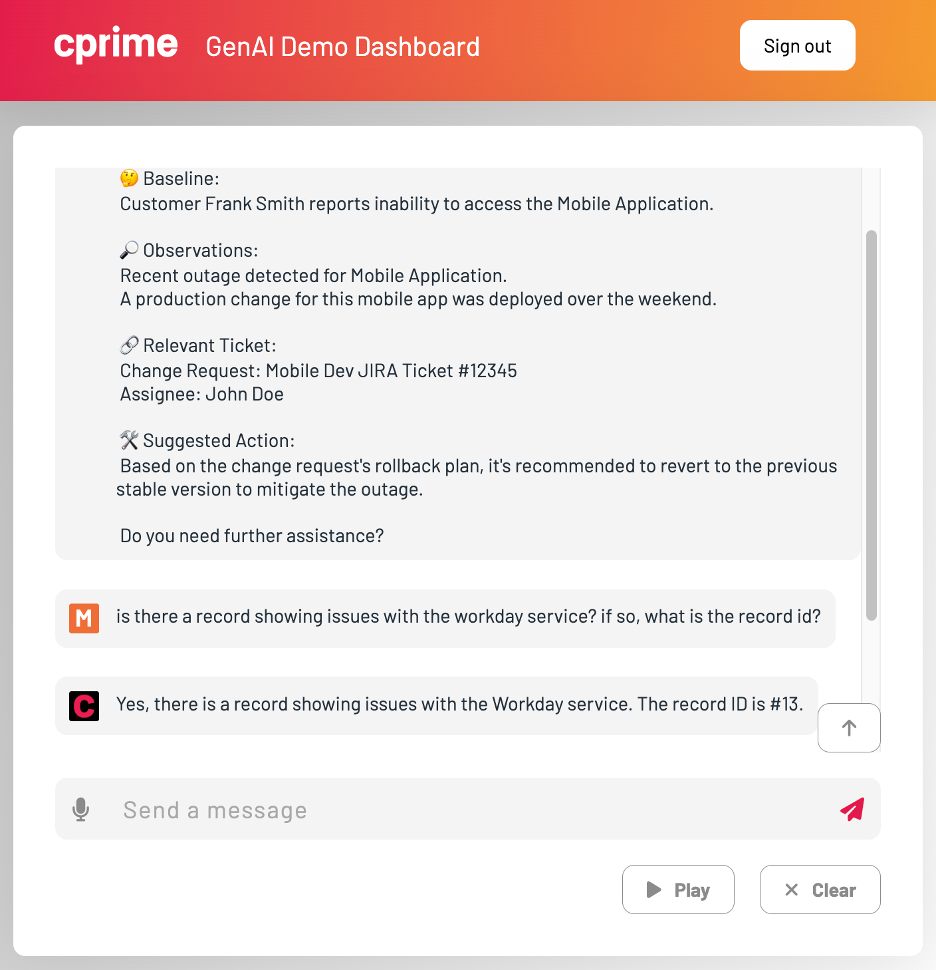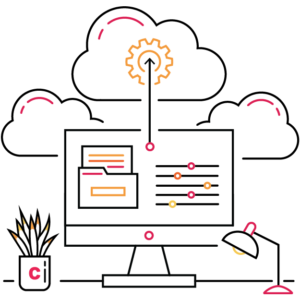Atlassian ecosystem integrations FAQs addressed in this article:
- What is the value of integrating the Atlassian ecosystem? – Integrating the Atlassian Cloud ecosystem enhances productivity, efficiency, and collaboration by leveraging AI and ensuring tools complement each other.
- How does IT Service Management fit into the Atlassian ecosystem? – IT Service Management (ITSM) within the Atlassian ecosystem, particularly through Jira Service Management, streamlines incident, problem, and change management to align IT services with business needs.
- Can non-IT teams benefit from Atlassian ecosystem integrations? – Yes, non-IT teams can utilize tools like Atlassian Jira Cloud (which will soon absorb all the functionality of the current Jira Work Management solution) for project management, risk tracking, and aligning with business objectives, enhancing team productivity and project clarity.
- What role does enterprise agility play in the Atlassian ecosystem? – Enterprise agility, supported by tools like Jira Align, is crucial for adapting to market changes, aligning team efforts with business goals, and making informed decisions swiftly.
- How can organizations optimize their Atlassian Cloud ecosystem? – Organizations can optimize their Atlassian ecosystem by consuming quality content for practical applications, leveraging live software demonstrations, and seeking expert assistance from Cprime for strategic tool integration.
The Atlassian suite is known for its robust set of tools designed to enhance productivity and collaboration. However, to truly harness the power of these tools, a strategic approach to integration is essential. This approach not only maximizes return on investment (ROI) but also significantly improves functionality, efficiency, and results across teams and projects.
The key to unlocking this potential lies in understanding and implementing best practices and strategies that maximize the use of the entire Atlassian Cloud ecosystem. Doing so effectively, businesses can create a seamless workflow that leverages the full spectrum of Atlassian tools, ensuring that every team member—both inside and outside IT—can contribute to the organization’s success in a meaningful way.
As we delve into the intricacies of creating an integrated tooling ecosystem, we’ll explore the transformative impact of artificial intelligence (AI), the importance of tool interaction and synchronization, and the critical areas of focus within the Atlassian suite. And, we’ll direct you to further resources that can aid your move to a better integrated Atlassian ecosystem.
Harnessing the Power of AI and Synergy in Atlassian’s Cloud Ecosystem
The synergy between different areas within the Atlassian ecosystem amplifies the benefits of a unified approach. When cloud-native tools such as Jira Software, Confluence, Jira Align, and others are seamlessly integrated, they create a cohesive environment that supports a wide range of business functions. This interconnectedness ensures that information flows freely between teams, enhancing collaboration, improving decision-making, and accelerating project timelines.
Moreover, a well-integrated tooling ecosystem facilitates a holistic view of projects and operations, allowing leaders to identify bottlenecks, allocate resources more effectively, and track progress in real-time. This comprehensive visibility is crucial for adapting to market changes swiftly and maintaining a competitive edge.
For modern enterprises, the value of leveraging artificial intelligence (AI) as they optimize their tooling ecosystem cannot be overstated. AI’s ability to analyze vast amounts of data, automate repetitive tasks, and provide actionable insights can significantly enhance the efficiency and effectiveness of the tools within the Atlassian suite. Some powerful AI features are already baked into many Atlassian Cloud tools, and additional AI functionality can be leveraged via strategic third-party integrations.
Elevating Collaboration Through Strategic Tool Integration
One of the foundational best practices for tool integration is ensuring that tools not only interact but also complement each other. This approach allows for the seamless exchange of information and workflows across different platforms, eliminating silos and fostering a more collaborative and efficient work environment.
For instance, integrating Jira Software with Confluence enables teams to link project tasks directly to relevant documentation, ensuring that all team members have access to the information they need, when they need it. And, integrating Bitbucket with Jira Software allows development teams to track the progress of code commits and pull requests directly within the context of their Jira tasks.
Moreover, the synchronization between tools can provide value across different levels of the organization. For example, integrating Jira Software with Jira Service Management ties together incident and change management with the development-level tasks needed to resolve the associated issues. And, tying together Jira Software and Jira Align opens incredible real-time monitoring and reporting capabilities, right up to the enterprise strategic level. This level of integration ensures that project managers and executive stakeholders have real-time visibility into the development process, facilitating better planning and decision-making.
Furthermore, the strategic integration of Atlassian Cloud tools can enhance the agility of an organization, enabling teams to respond more quickly to changes and opportunities. By automating workflows and creating a unified source of truth, teams can reduce the time spent on manual tasks—such as manually manipulating data or digging into another department’s tool looking for relevant information—and focus on delivering value to customers.
The strategic integration of Atlassian tools is a critical step towards building a more connected, efficient, and agile organization. By leveraging the strengths of each tool and ensuring they work together seamlessly, businesses can unlock new levels of productivity and innovation.
Navigating the Core Pillars of the Atlassian Cloud Ecosystem
While the suite of Atlassian tools cover a wide range of use cases and capabilities, there are three core functions we’ve found of most concern to our clients:
Transforming IT Service Management
At the core of efficient IT operations lies IT Service Management (ITSM), a discipline that has been significantly enhanced within the Atlassian ecosystem. ITSM’s role transcends traditional IT support, evolving into a strategic asset for aligning IT services with business needs.
Within this ecosystem, Jira Service Management stands out by offering a versatile platform that streamlines incident, problem, and change management. This tool not only facilitates rapid response to IT issues but also fosters a proactive approach to minimizing future disruptions, thereby ensuring business continuity and enhancing customer satisfaction.
Empowering Teams Beyond IT
Beyond the realm of IT, the Atlassian Cloud suite offers robust solutions for work management, catering to the diverse needs of non-IT teams.
Atlassian Jira Cloud (which will soon absorb all the functionality of the current Jira Work Management solution) emerges as a pivotal tool for project management, risk tracking, and aligning with overarching business objectives. This platform democratizes the power of project management, making it accessible to teams across the organization, from marketing to HR and finance. By providing a unified view of tasks, deadlines, and resources, Jira empowers teams to plan, execute, and track projects with unprecedented clarity and coordination.
Accelerating Enterprise Agility
Modern enterprises must be as nimble as small startups if they’re going to capitalize on the advantages of size and scope. The Atlassian ecosystem supports this agility through tools like Jira Align, which bridges the gap between strategic planning and execution.
Jira Align serves as a strategic “hub” uniting the work being tracked and managed within Jira Software, JSM, and elsewhere, facilitating the alignment of team efforts with business goals, and ensuring that every task and project contributes to the broader objectives of the organization. This tool provides real-time insights into progress, dependencies, and outcomes, enabling leaders to make informed decisions and adapt strategies swiftly to meet evolving market demands.
Unlocking the Full Potential of Your Atlassian Ecosystem
To truly unlock the full potential of your Atlassian ecosystem, it’s essential to dive deeper into the practical applications and witness these tools in action.
We invite you to explore further by watching our webinar on demand, “Mastering an Integrated Atlassian Tooling Ecosystem: Strategies, Success Stories, and Best Practices”. This resource is packed with live software demonstrations that illustrate the transformative power of integrating Atlassian Cloud tools. Witness firsthand how Jira Service Management, Jira Work Management (now integrated into Jira Software), and Jira Align can be leveraged to streamline operations, enhance collaboration, and drive enterprise agility.
For organizations looking to optimize their Atlassian tooling ecosystem, Cprime stands ready to assist. Our expertise in Atlassian Cloud solutions can help you navigate the complexities of tool integration, ensuring that your business leverages the full suite of capabilities offered by the Atlassian ecosystem. Whether you’re seeking to enhance IT service management, empower non-IT teams with effective work management tools, or accelerate your enterprise agility, Cprime has the knowledge and experience to guide you towards achieving your goals.
Don’t let the potential of your Atlassian Cloud tools go untapped. Explore the webinar and more relevant content to gain valuable insights and strategies for mastering an integrated Atlassian tooling ecosystem. For personalized assistance and expert advice on optimizing your tooling ecosystem, contact Cprime today. Together, we can transform the way your organization works, making it more efficient, collaborative, and agile.























